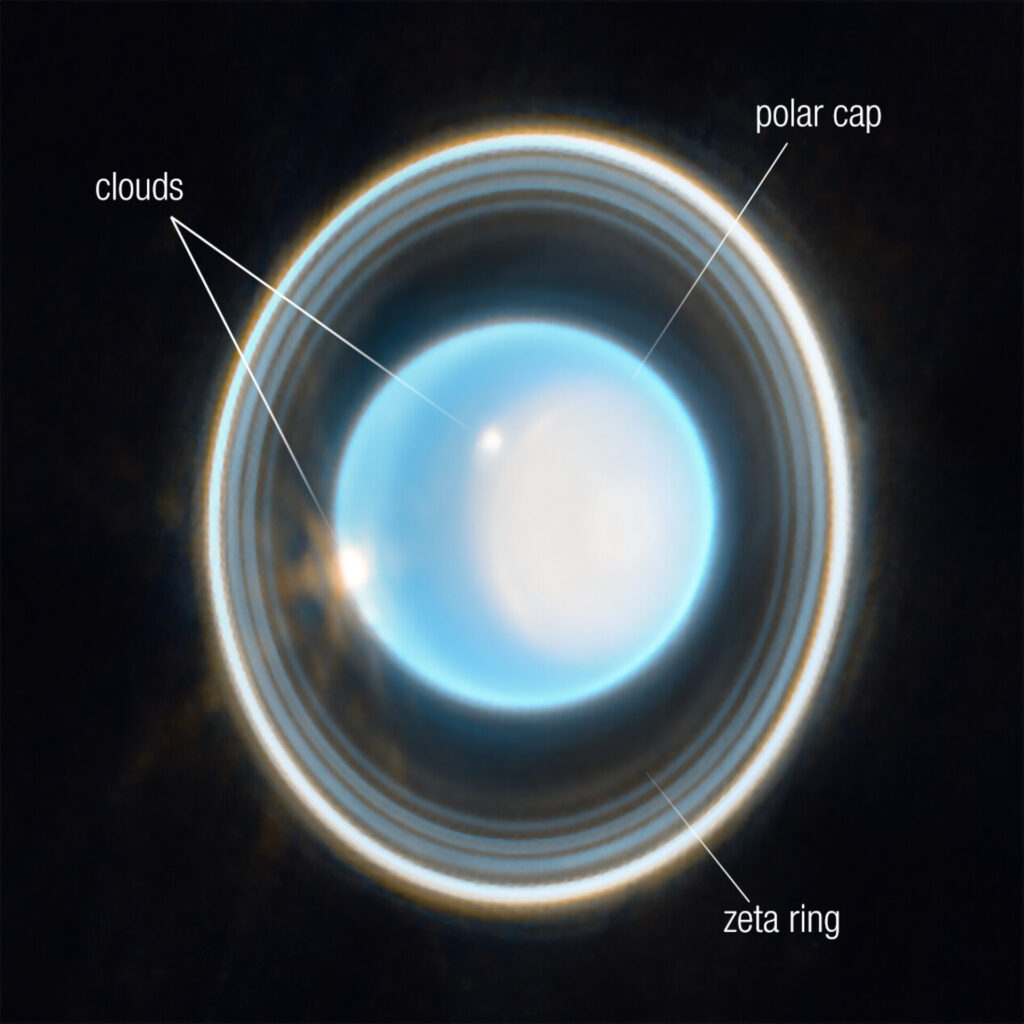The image of the day is indeed the famous breathtaking image of Uranus that reveals the planet in stunning detail like never before.
The image showcases Uranus’s dynamic north polar cap, a feature that stands out in sharp contrast to the planet’s surrounding atmosphere. Unlike Earth, where polar ice caps are primarily composed of water, Uranus’s caps are made of a dense haze of methane particles. This haze, which condenses into ice particles in the planet’s atmosphere, creates a bright, white cap that is particularly visible in infrared light. The polar cap is not static—it evolves and becomes more prominent as Uranus progresses through its seasons, which last decades due to its extreme axial tilt.

Uranus’s rings also take center stage in this image, particularly the faint Zeta ring, which has historically been difficult to observe. These rings, composed of narrow bands of particles likely made of water ice mixed with darker material, differ significantly from the broad, bright rings of Saturn. The Zeta ring’s faintness and distinct composition make it a fascinating subject for scientists studying planetary ring systems.
In addition to the rings, the image reveals nine of Uranus’s moons, which appear as bright blue dots scattered around the planet. These moons, named after characters from Shakespeare and Alexander Pope, orbit Uranus in a manner that reflects the planet’s unique 98-degree tilt. This tilt causes Uranus to rotate almost on its side, leading to extreme seasonal variations where each pole experiences 42 years of continuous sunlight followed by 42 years of darkness.
Uranus is classified as an “ice giant,” a term that differentiates it from the gas giants Jupiter and Saturn. While Jupiter and Saturn are primarily composed of hydrogen and helium, Uranus has a significant amount of “ices” such as water, ammonia, and methane. Beneath its thick atmosphere, Uranus houses a dense, icy mantle mixed with rock and other heavier elements. This composition leads to some of the most extreme weather in the solar system, including powerful storms with winds reaching speeds of up to 900 kilometers per hour.
This image from the James Webb Space Telescope is more than just a visual marvel—it’s a scientific treasure trove that deepens our understanding of Uranus and the broader category of ice giants. As we continue to study Uranus and its fellow ice giant Neptune, we’re reminded that our solar system still holds many secrets, just waiting to be uncovered.



















